Go the extra mile
Towards a cooler planet
Find flights with lower emissions for your next trip
2 April 2025
Air travel plays a significant role in global carbon emissions, currently accounting for 2.4% of worldwide CO₂ emissions. Without intervention, this figure could rise to 22% by 2050.
Flying impacts the climate in more ways than just carbon emissions. Contrails—the white streaks left by planes—form clouds that trap heat, contributing to 60% of aviation's overall climate effect.
Experts warn that if no action is taken, emissions from aviation could triple by mid-century. The good news is that travellers can make smarter choices to reduce their carbon footprint. Simple changes in how we fly can lead to significant reductions in emissions.
This guide highlights practical ways to cut emissions while still enjoying air travel. From seat selection to choosing airlines, small decisions can have a big environmental impact.

Why low-emission flight booking options matter
Not all emissions from air travel stem solely from fuel combustion. The aviation industry influences the climate through multiple factors, including contrails and seating choices.
Professional travel, such as humanitarian missions, accounts for 7% of emissions linked to the international aid sector. This underscores how travel patterns within specific industries contribute to the overall carbon footprint of aviation.
Contrails—the thin, wispy trails left behind by aircraft—form when water vapour and exhaust particles freeze at high altitudes. These artificial clouds trap heat in the atmosphere, leading to a warming effect that is two to three times greater than that of CO₂ alone.
According to Carbone 4, non-CO₂ effects such as contrails account for 60% of aviation’s total climate impact. A 2021 study published in Environmental Research linked air travel to 4% of the global rise in temperatures.
Seat selection also plays a role. Data from DEFRA indicates that:
- Business class travel produces 228g of CO₂ per passenger kilometre.
- Economy class emits just 79g—around 65% less.
Making simple adjustments, such as flying economy or choosing direct flights to avoid layovers, can significantly reduce an individual’s emissions. Small decisions, when multiplied across many travellers, contribute to meaningful reductions in aviation’s overall impact.
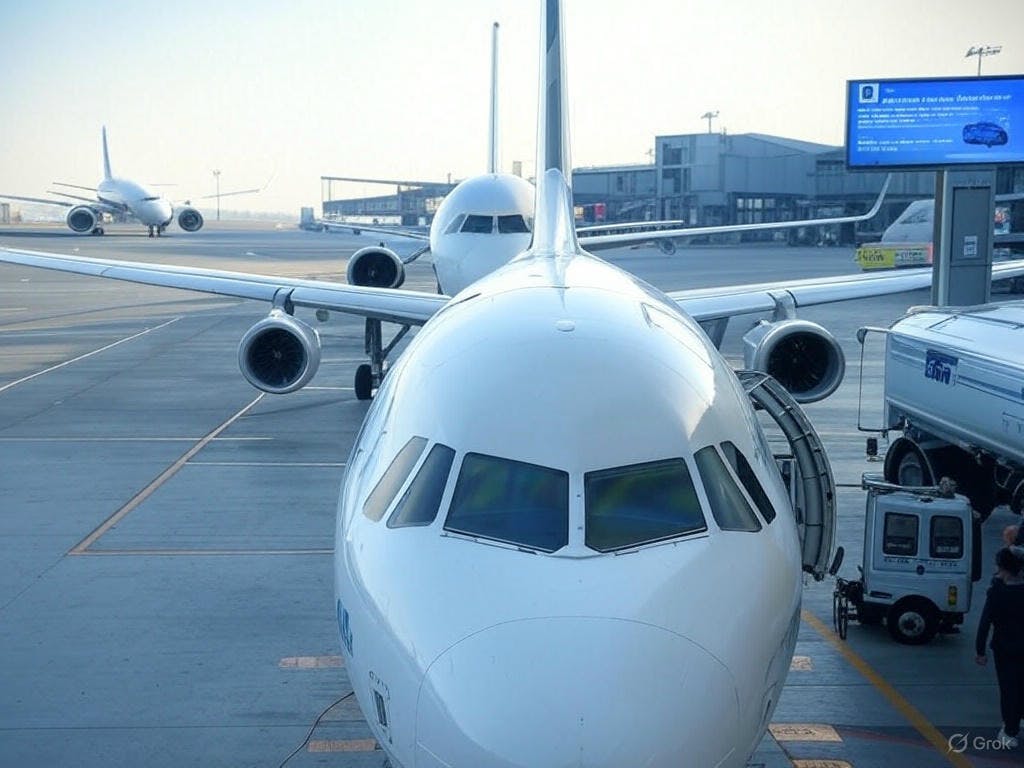
Key factors that determine flight emissions
Several factors influence the carbon emissions of a flight, including aircraft type, seating configuration, and route distance.
- Jakarta–Singapore: Economy-focused airlines reduce emissions by around 10kg per passenger by using fuel-efficient Airbus A320s.
- London–Tokyo: Direct flights on Boeing 787s produce 1,003kg less CO₂ per passenger compared to older aircraft with layovers.
Newer aircraft play a key role in improving efficiency. The Airbus A321neo consumes 30% less fuel per seat than earlier models, while winglet technology—such as Sharklets—enhances aerodynamics, reducing fuel consumption by approximately 4%.
Takeoff and landing contribute around 25% of a flight’s total emissions, making direct routes preferable when feasible.
Sustainable Aviation Fuel (SAF) offers significant potential, with the ability to cut emissions by 70–80%. However, its adoption remains below 1% across the industry due to production constraints and limited availability.
Seat selection also has a considerable impact. Business class travel generates nearly three times the CO₂ per passenger kilometre compared to economy class.
How to choose the most efficient airlines
Airlines differ significantly in fuel efficiency and overall environmental impact. Independent assessments, such as Atmosfair’s A–G rating system, help travellers identify the most efficient carriers. In 2018, only 11 out of 200 airlines received an "A" rating for efficiency.
A 2017 transatlantic study by the ICCT revealed a 63% gap in emissions between the most and least efficient airlines. Several factors influence these differences:
- Passenger load: Flights operating at 85% capacity produce 15% less CO₂ per passenger than those at 70% capacity.
- Aircraft type: Boeing 787s consume 20% less fuel than older 747 models, highlighting the importance of modern engines and aerodynamic advancements.
- Cargo share: Aircraft that transport freight alongside passengers distribute emissions across a greater payload, improving efficiency.
- Seating density: Airlines that optimise cabin space can significantly reduce per-passenger emissions. For example, a fully occupied economy cabin results in 65% lower emissions per traveller compared to business class.
Some airlines, including Delta and United, have committed to Science Based Targets for achieving net-zero operations. By investing in newer aircraft and alternative fuels, these carriers offer passengers a clearer way to make lower-impact travel choices.
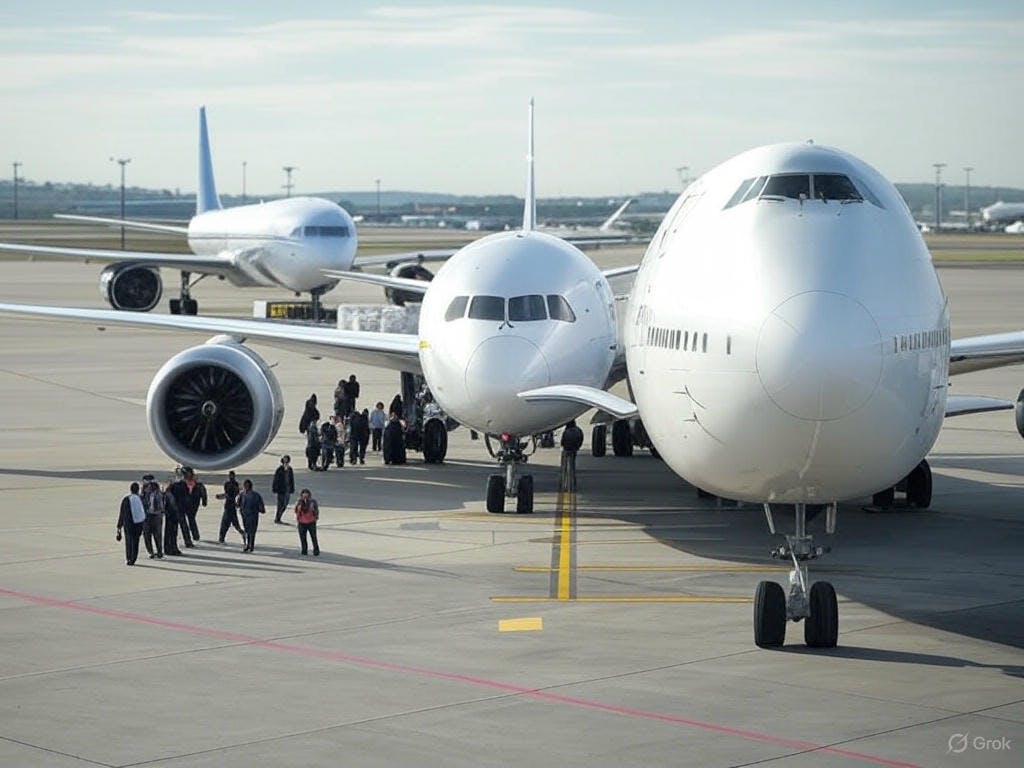
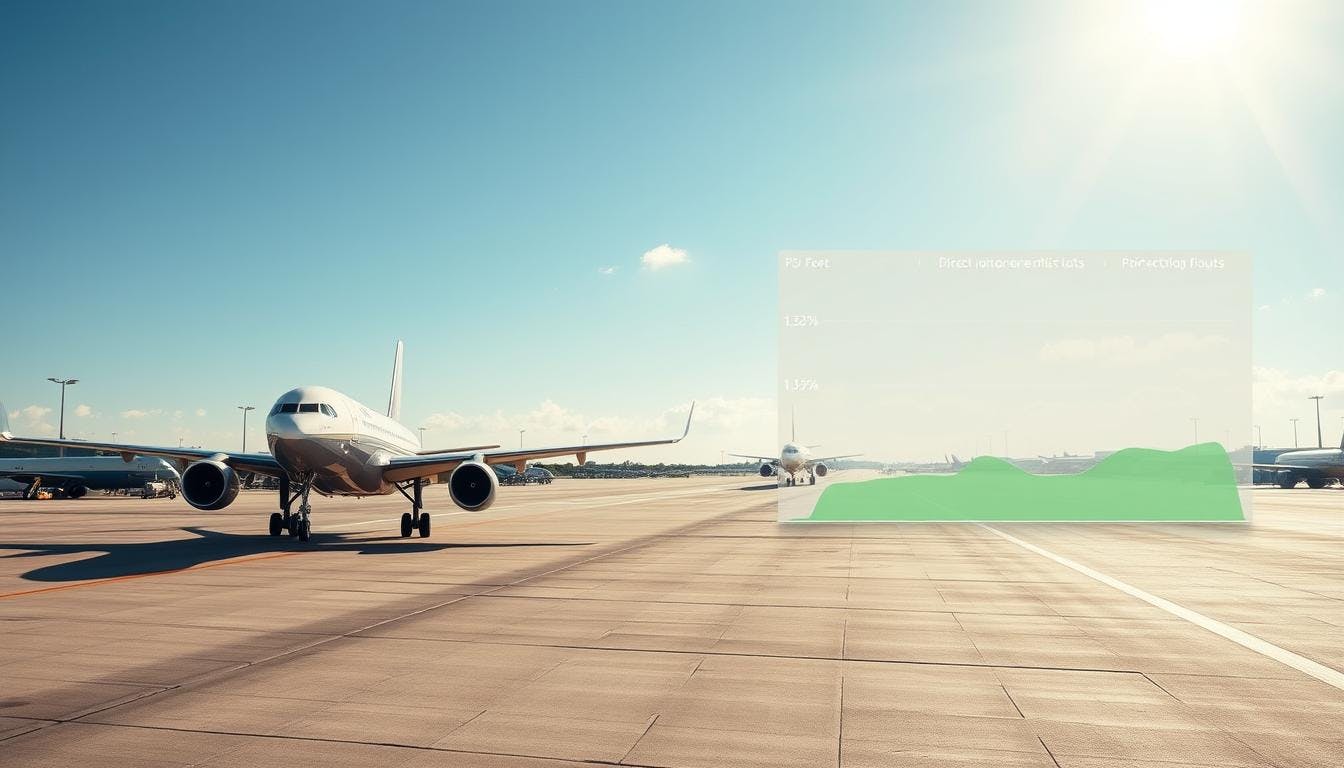
Prioritise direct flights for lower emissions
Route planning plays a crucial role in determining a flight’s carbon footprint. Direct flights are generally more efficient, as they reduce the number of takeoffs and landings—phases that account for approximately 25% of a journey’s total fuel consumption.
The impact of smart routing is evident in polar flight paths. For instance, a direct Singapore–New York route eliminates the need for a stopover in the Middle East, cutting around 1,000 nautical miles from the journey. This reduces flight time by roughly three hours and lowers CO₂ emissions.
Other key factors in route efficiency include:
- Curved Earth routing: Following the planet’s curvature often results in shorter and more efficient flight paths.
- Fuel consumption: Takeoff burns as much fuel as approximately 100 miles of cruising.
- Technology tools: Platforms such as Google Flights provide emissions estimates to help travellers compare route options.
According to the Climate Coalition, choosing direct flights can reduce emissions by up to 100kg CO₂e per trip—the equivalent of a household refrigerator’s annual energy consumption.
Newer aircraft, such as the Boeing 787-8, improve efficiency further by using approximately 15% less fuel than older models. Combining fuel-efficient planes with optimised routing offers a practical way to reduce aviation’s overall impact.
The impact of flying economy class
The choice of travel class has a significant impact on emissions. According to Future Tracker’s 2023 analysis, first class seats generate nine times more CO₂e than economy, while business class produces three times as much.
A major factor behind this disparity is space allocation. Premium cabins dedicate more room per passenger:
- First class: 40 square feet per seat
- Business class: 28 square feet
- Economy class: 12 square feet
Some organisations have recognised the benefits of prioritising economy travel. For example, Doctors Without Borders reduced emissions per mission by 67% by adopting a policy requiring economy-class flights, illustrating how collective decisions can drive substantial reductions.
Baggage weight also plays a role. First-class passengers are typically allowed up to 70lb of luggage, compared to 50lb in economy. Heavier loads increase fuel consumption per passenger mile.
Short-haul flights highlight the contrast in emissions:
- Economy class: 150kg CO₂e for a 1,400km journey
- Business class: 225kg CO₂e—a 30% increase
The difference is even more pronounced on long-haul routes. Opting for economy instead of business class on a New York–London flight can cut emissions by 1.5 metric tonnes per year. These reductions add up when more travellers make similar choices.
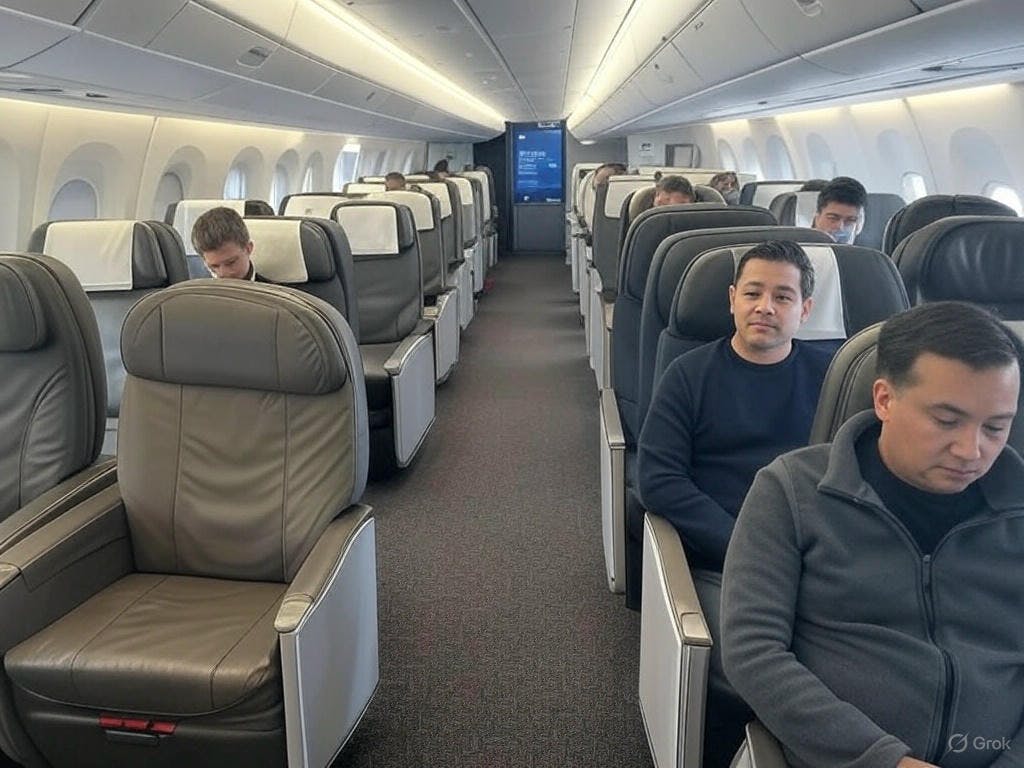
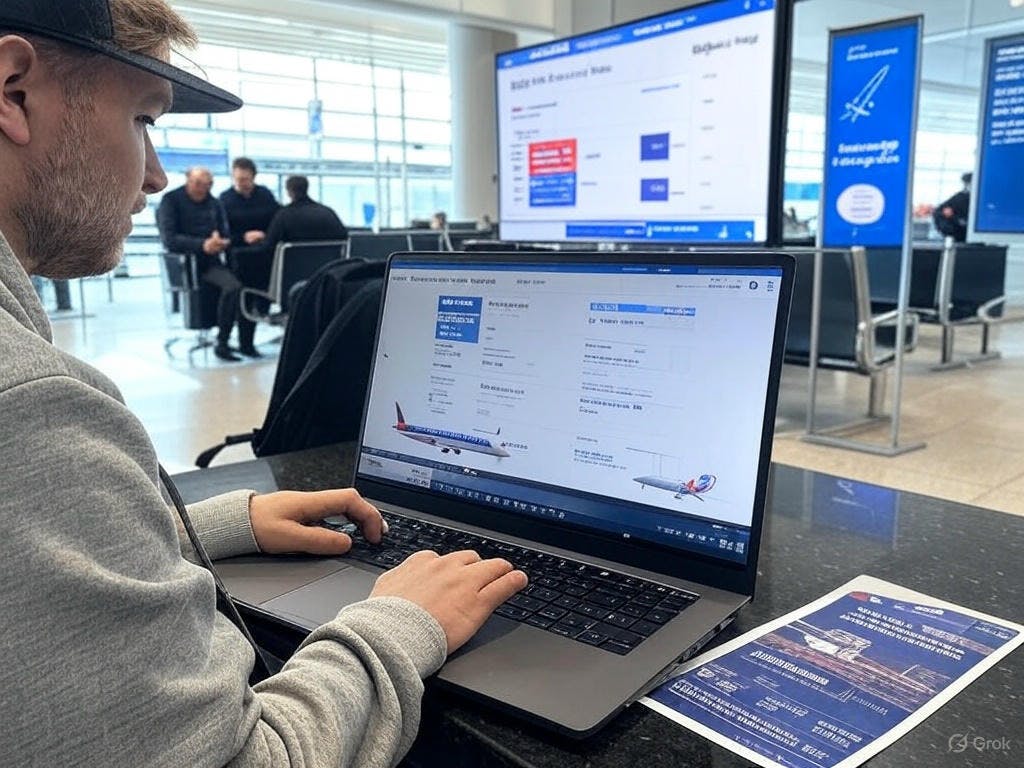
Tools to compare low-emission flight options
Digital tools now enable travellers to measure and compare the environmental impact of air travel. Google Flights is a leader in this space, providing carbon footprint estimates for different airlines and aircraft. For example, an Airbus A321neo emits 292kg of CO₂ on a given route, while an older Boeing 777 generates 416kg.
These estimates are based on the Travel Impact Model, but they do not account for non-CO₂ effects such as contrails. To address this gap, Carbone4’s 2022 methodology recommends doubling the Radiative Forcing Index (RFI), which reflects the full climate impact of aviation.
For those seeking more detailed analysis, third-party tools offer deeper insights. The Climate Action Accelerator’s 2024 toolkit helps professionals track emissions, while Ecollective’s flight data compares airlines' Sustainable Aviation Fuel (SAF) disclosures with their actual fuel consumption.
For organisations adopting emissions tracking:
- Integrate RFI-adjusted calculators into booking systems.
- Prioritise direct flights and newer aircraft in travel policies.
- Provide staff with training to interpret emissions data accurately.
Google Flights’ Explore Map simplifies the process of identifying low-emission travel options. Users can filter by emissions and view typical carbon footprints for various routes, making it easier to make informed decisions that reduce environmental impact.
Overcoming challenges in booking sustainable flights
Corporate travel policies often conflict with sustainability goals. Despite their environmental impact, premium class upgrades remain standard in many business contracts. A 2024 survey found that 68% of companies still automatically book business class for international trips.
Several factors play a key role in making policy changes successful. For instance, early booking discounts can help offset the 15–30% premium for direct flights, which in turn save 18–25% in emissions compared to flights with layovers.
The humanitarian sector provides an example of what works. Doctors Without Borders saved $2.3 million last year by enforcing an economy class travel policy. This approach covers 12,000 staff members across 70 countries, demonstrating the power of collective action.
Business travellers need practical, straightforward solutions. Southwest Airlines' simple, JavaScript-free interface shows how easy-to-use platforms encourage adoption. Their model proves that accessibility is just as crucial as the environmental arguments when driving change.
Employee engagement is essential to overcoming resistance. Research indicates that personal norms have the greatest influence on sustainable choices. Training programmes that highlight individual contributions can significantly boost compliance with new policies.
The aviation industry suggests a phased approach to emissions reductions:
- Audit current travel emissions.
- Set clear reduction targets.
- Implement policy changes.
- Track progress quarterly.
Cost remains the primary barrier. While 75% of travellers express interest in sustainable options, only 45% prioritise them when booking flights. Providing clear savings projections can help justify the initial investment in more sustainable practices.

Start your journey towards more sustainable air travel
Every passenger can help reduce aviation’s carbon footprint by making smarter travel choices. Five actions can deliver measurable results:
- Flying economy reduces emissions by 65% compared to business class.
- Direct flights save 100kg of CO₂ per trip.
- Newer aircraft consume 30% less fuel than older models.
- Efficient airlines lower per-passenger emissions by 20%.
- Google Flights filters help identify cleaner travel options.
The Climate Action Accelerator offers organisational assessments. Their toolkit aligns with the IEA's Net Zero Scenario, which calls for a 60% reduction in aviation emissions by 2050.
Start today:
- Audit past bookings to identify opportunities for improvement.
- Implement emission filters when booking flights.
- Establish economy-class travel policies where possible.
The Stay Grounded network confirms that reducing demand for air travel remains essential for achieving 50–70% emission cuts by 2030.
17 South Street
Auckland 1010
New Zealand
info@carbonclick.com- -
- X
Sign up. Be inspired. Get clicking.
Subscribe now to stay up to date with CarbonClick, carbon offsetting and climate action.
By signing up you agree to our Privacy Policy.


